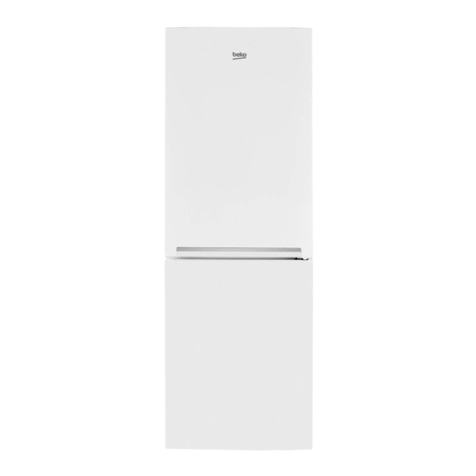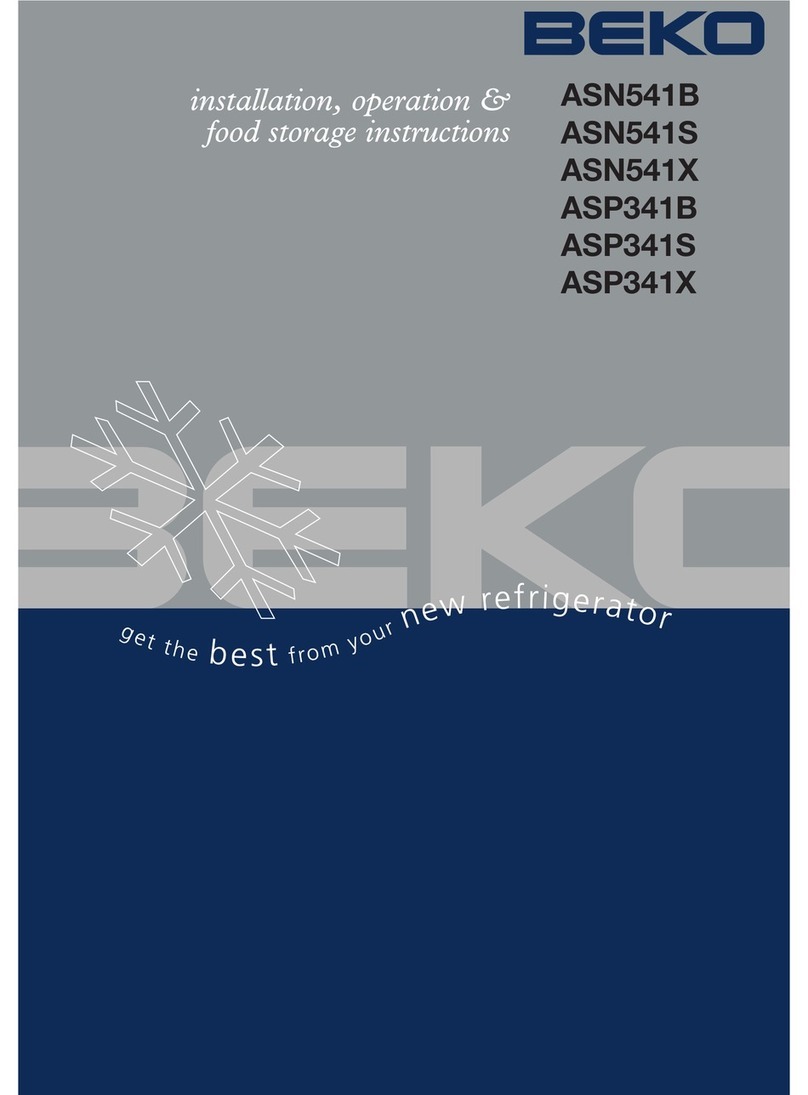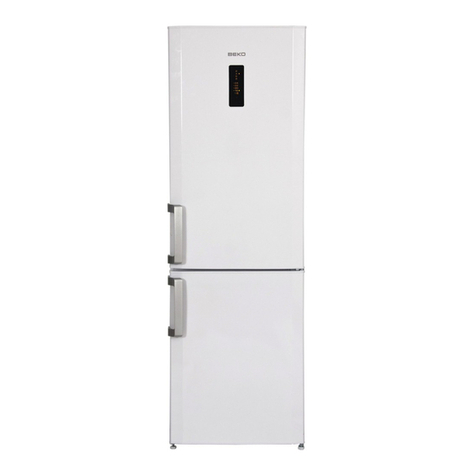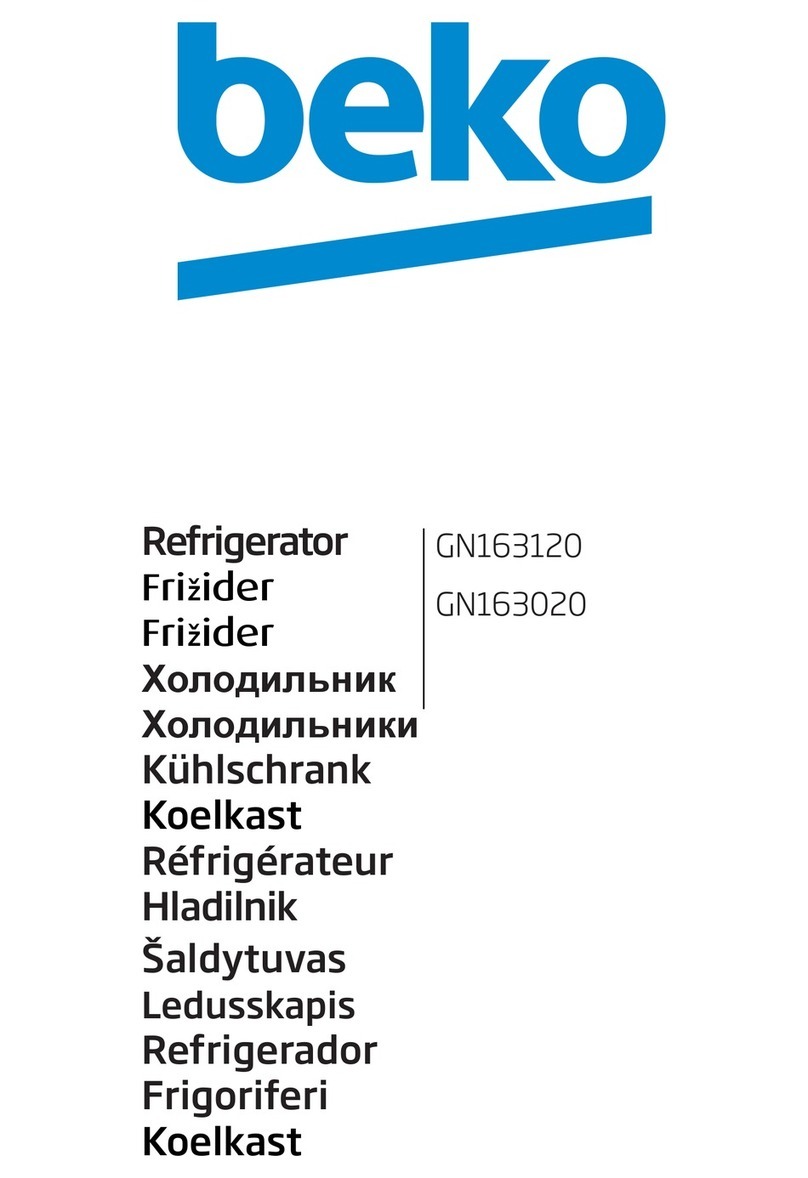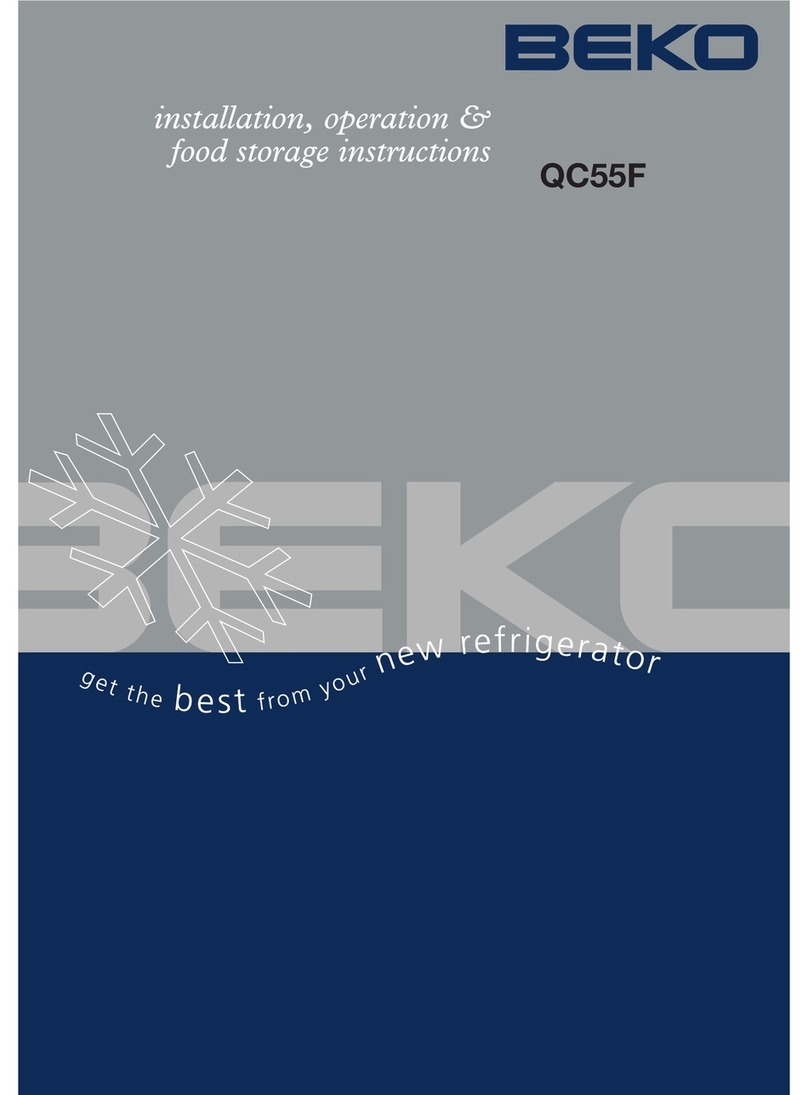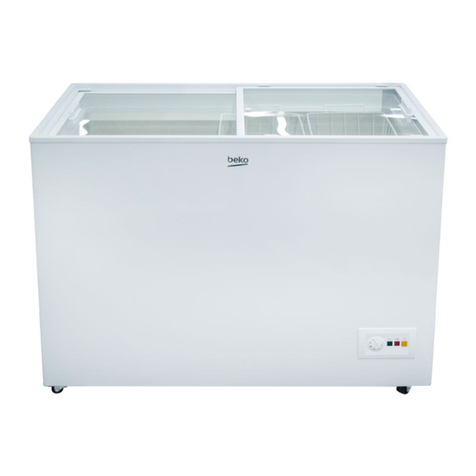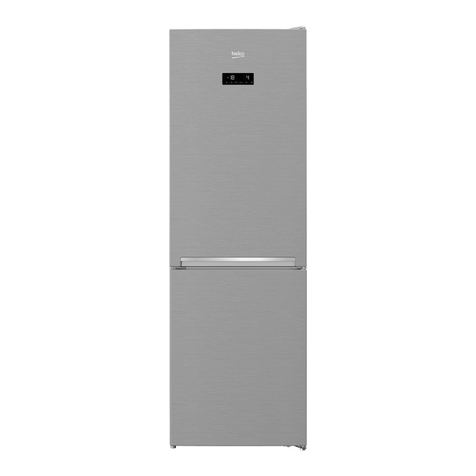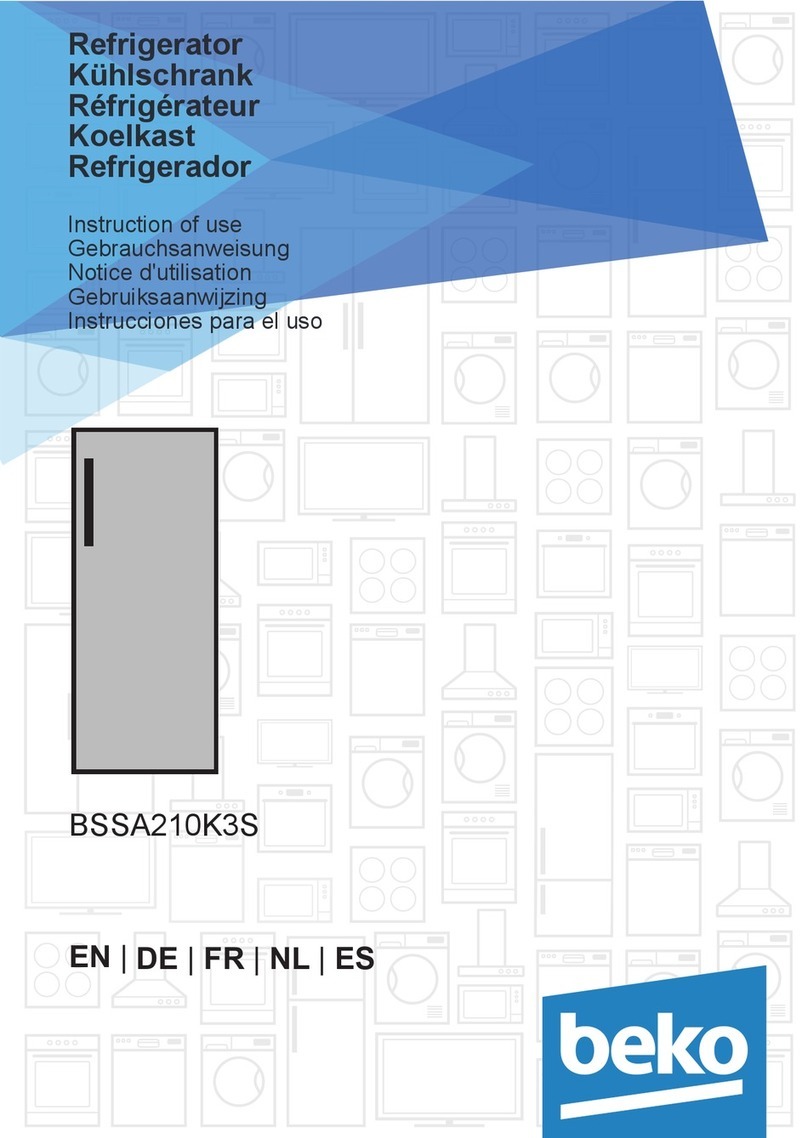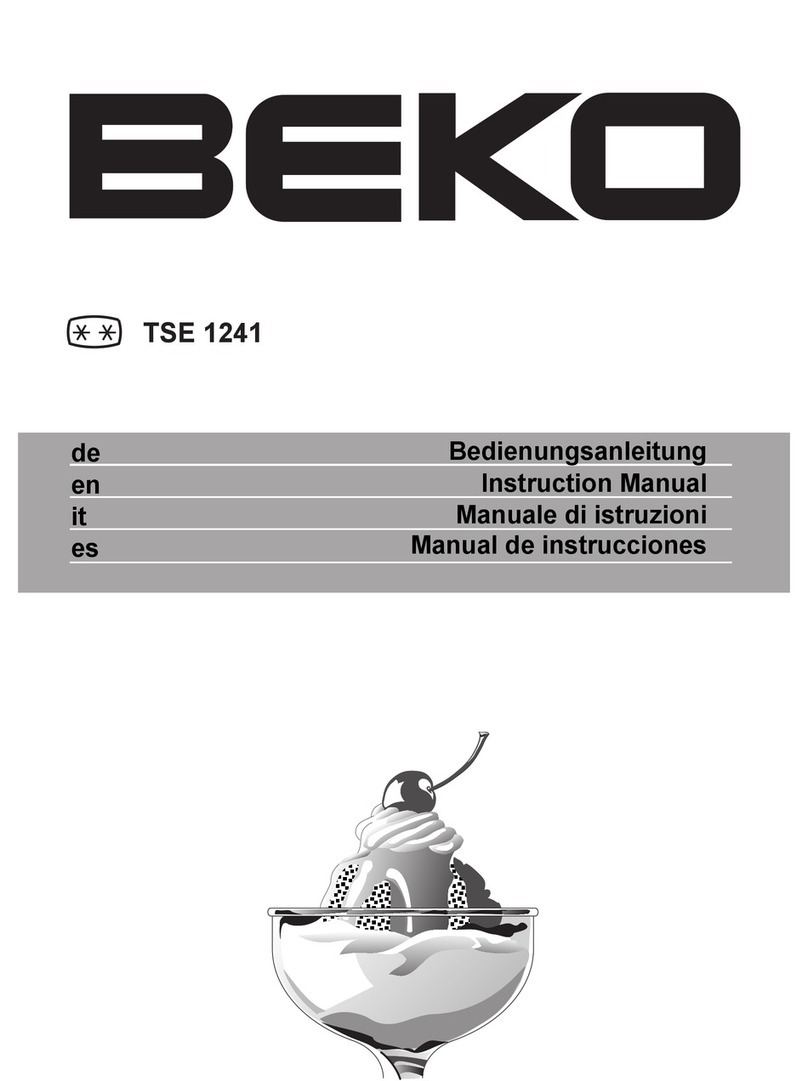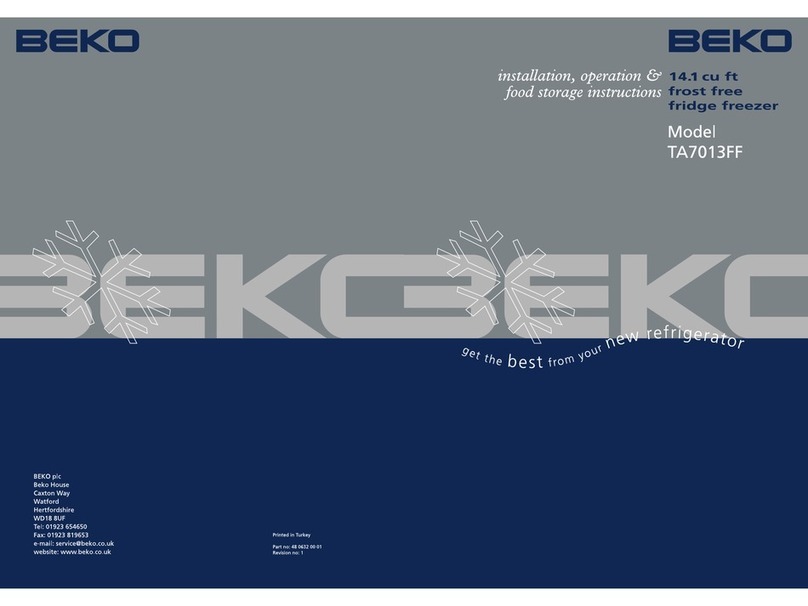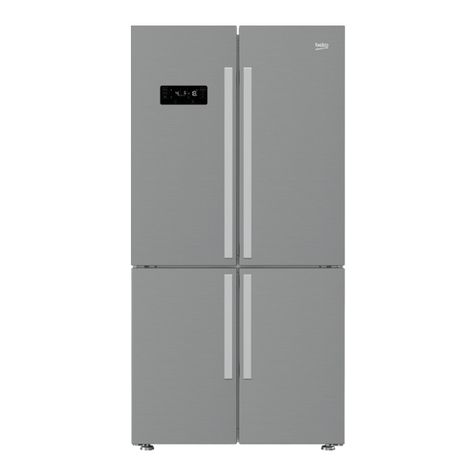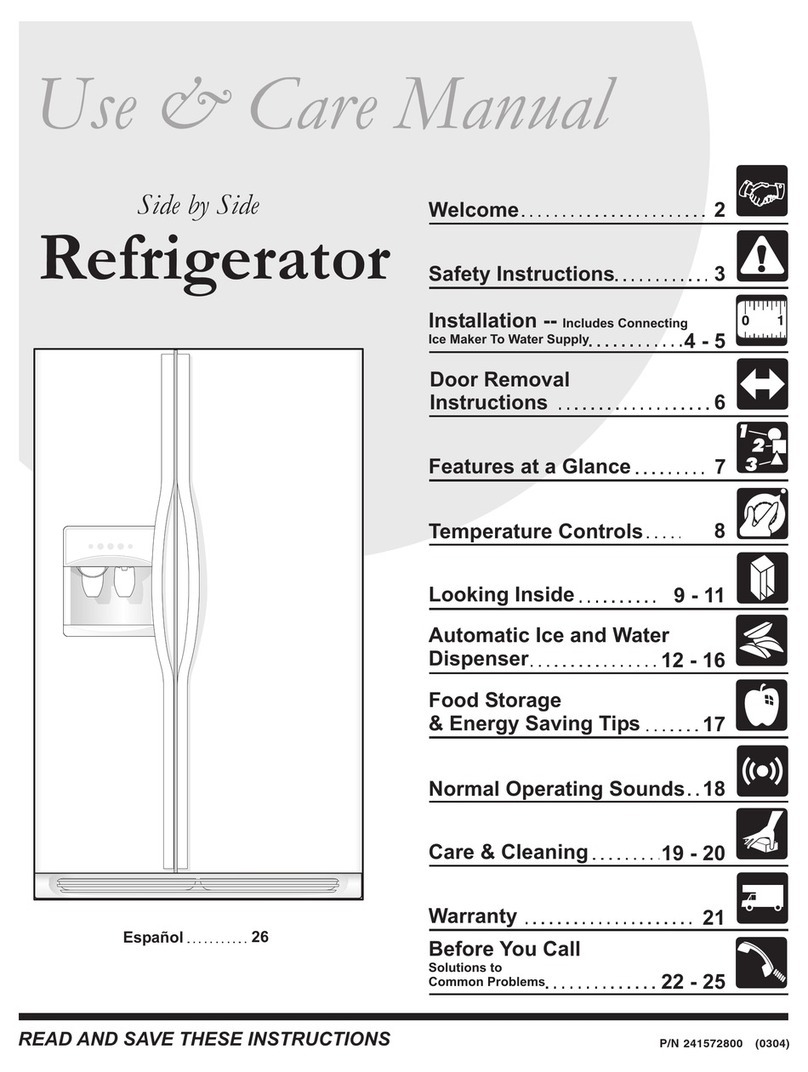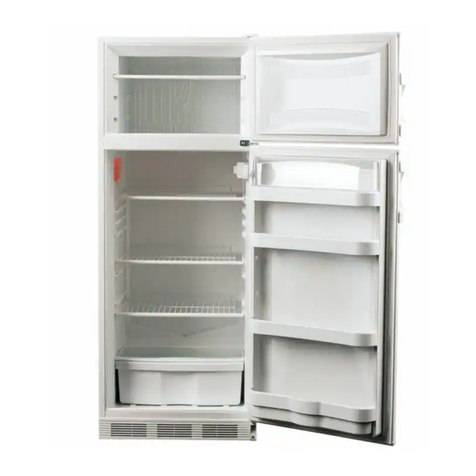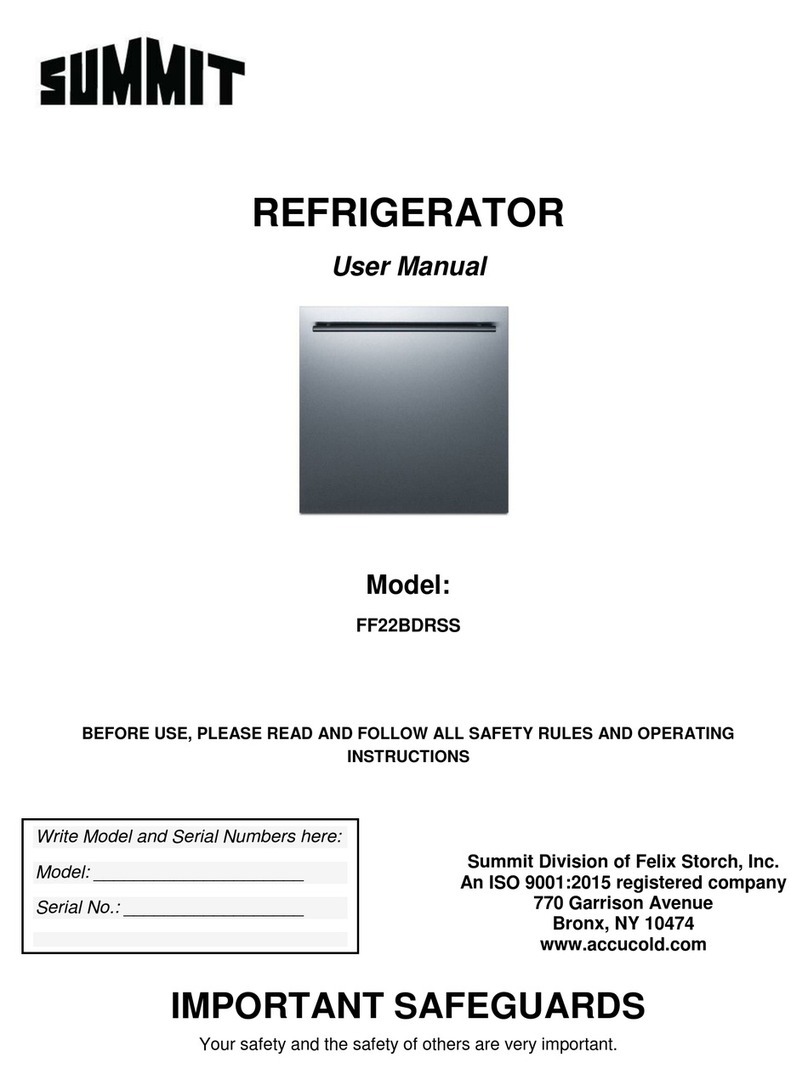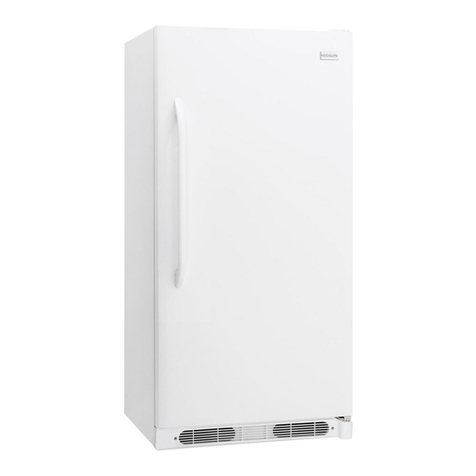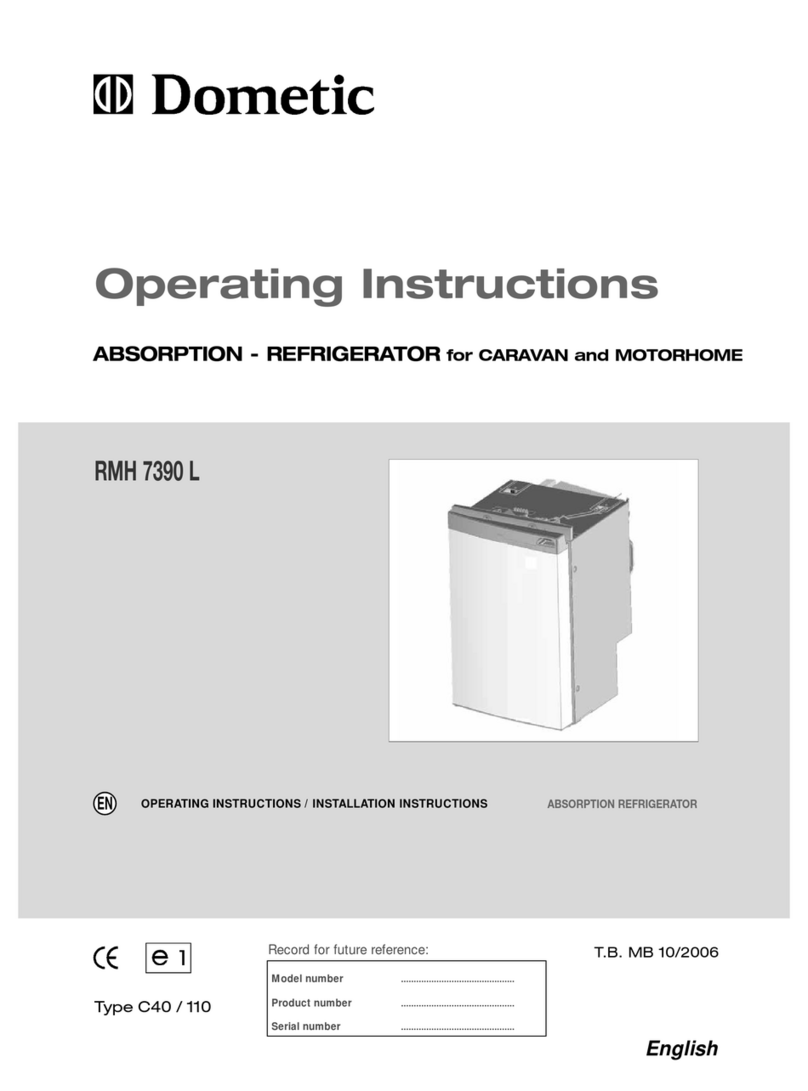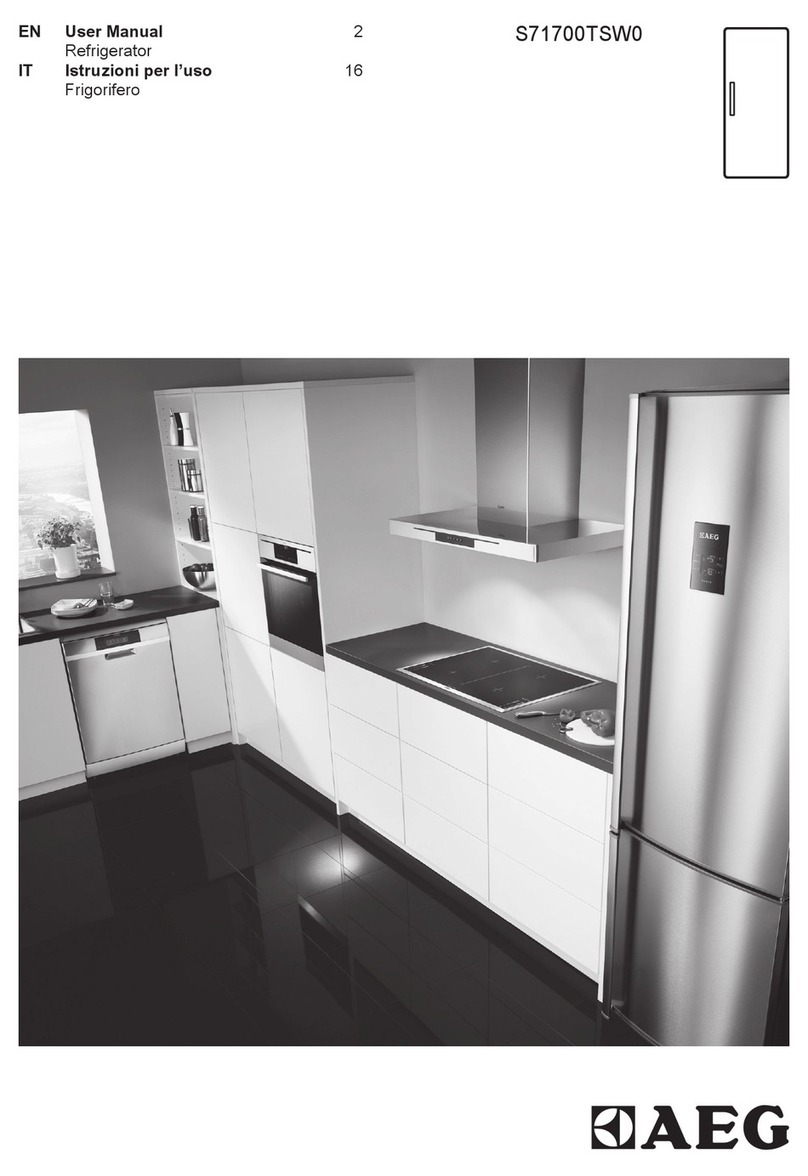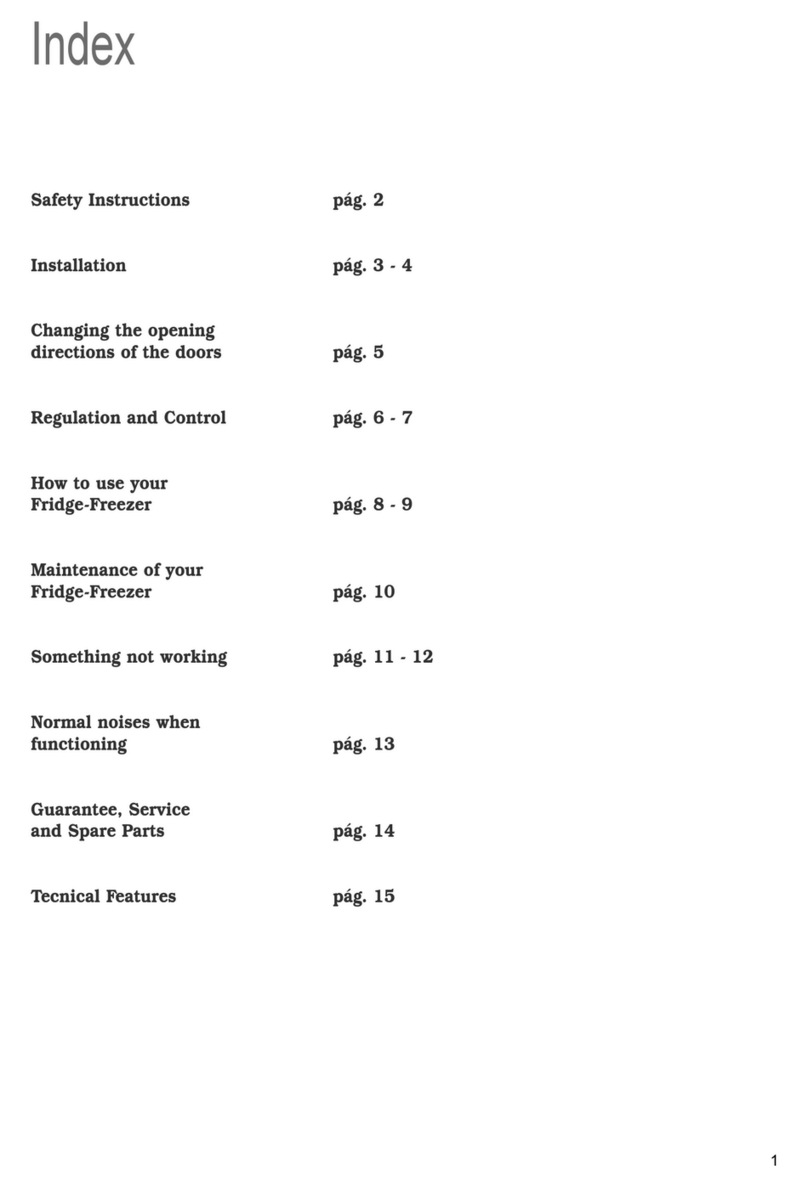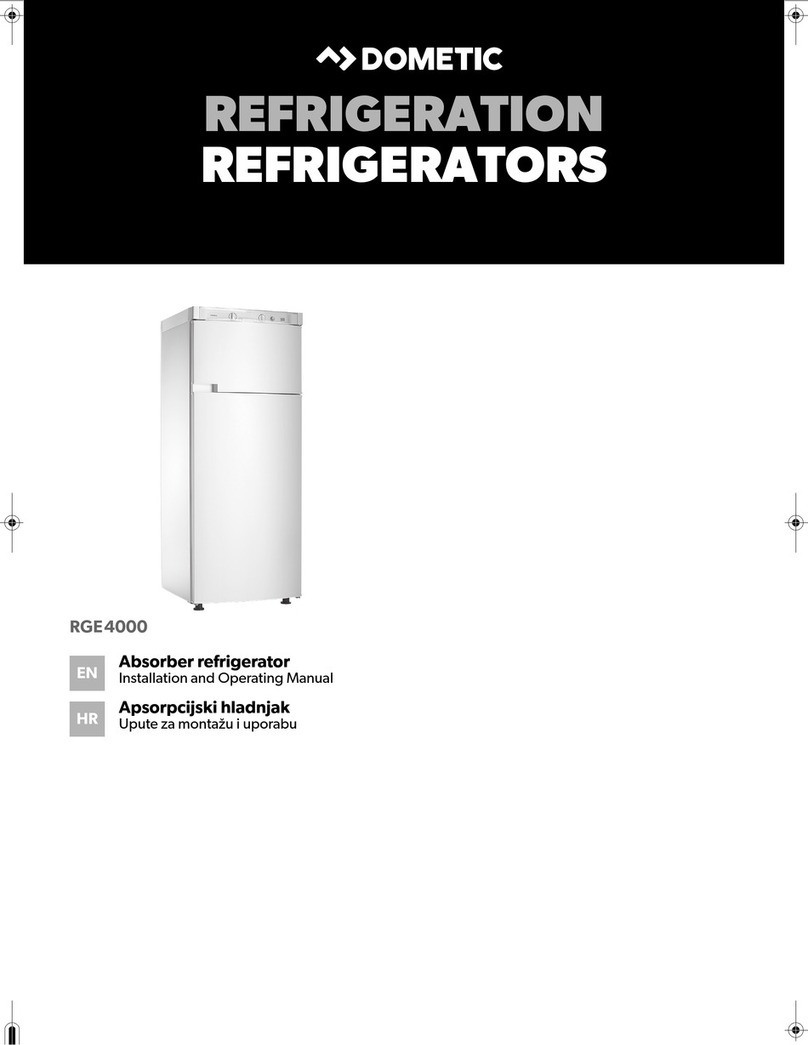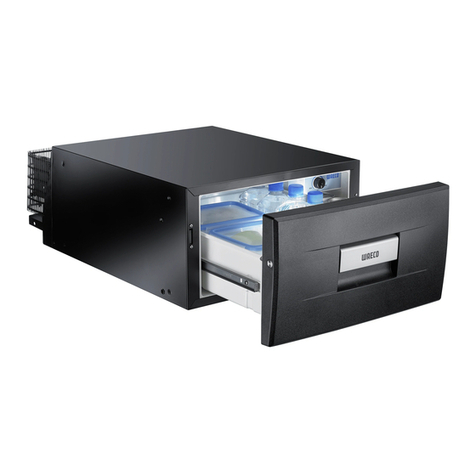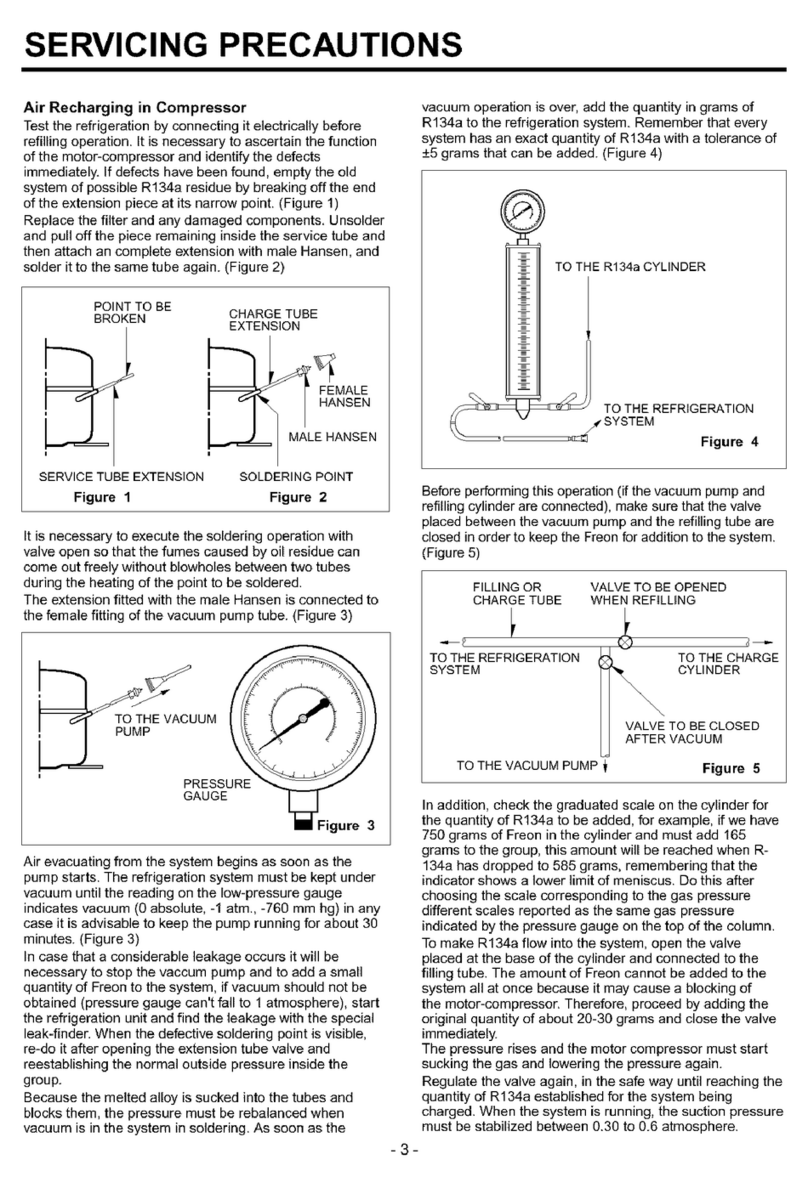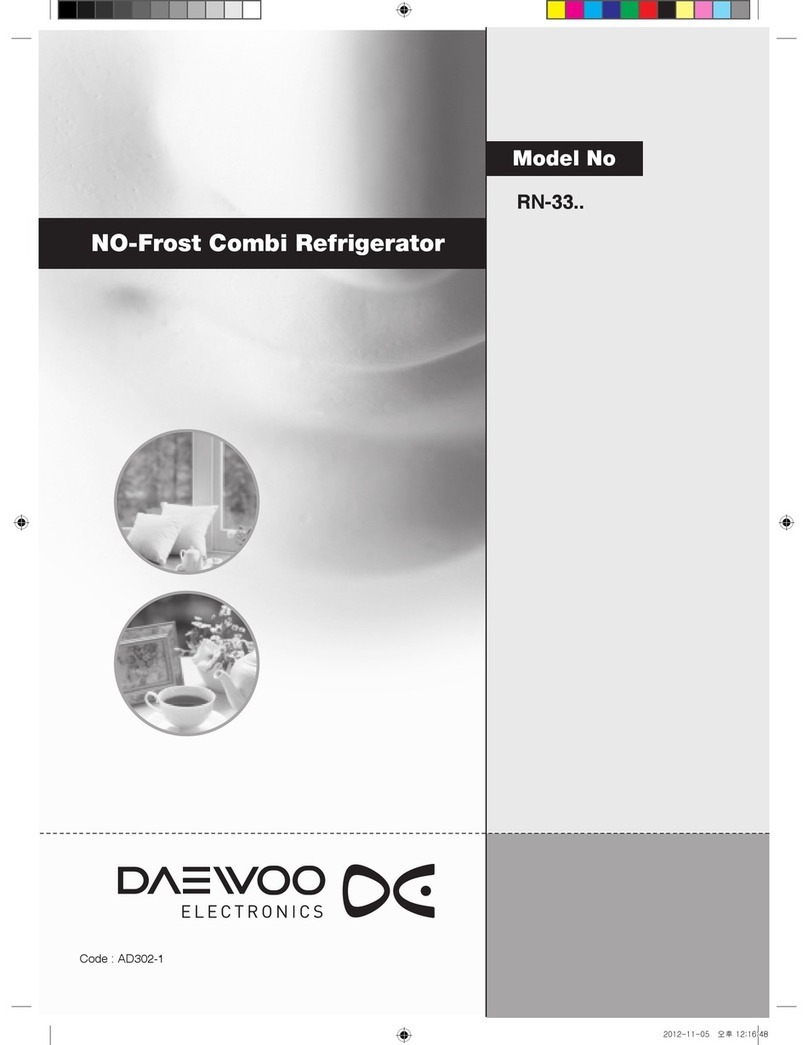WARNING!
In order to ensure a normal operation of your refrigerating appliance, which uses a completely environmentally friendly
refrigerant the R600a (flammable only under certain conditions) you must observe the following rules:
Do not hinder the free circulation of the air around the appliance.
Do not use mechanical devices in order to accelerate the defrosting, others than the ones recommended by the
manufacturer.
Do not destroy the refrigerating circuit.
Do not use electric appliances inside the food keeping compartment, other than those that might have been
recommended by the manufacturer.
WARNUNG!
Ihr Gerät verwendet ein umweltverträgliches Kältemittel, R600a (nur unter bestimmten Umständen brennbar). Um einen
einwandfreien Betrieb Ihres Gerätes sicherzustellen, beachten Sie bitte folgende Vorschriften:
Die Luftzirkulation um das Gerät darf nicht behindert sein.
Verwenden Sie außer der vom Hersteller empfohlenen, keine mechanischen Hilfsmittel, um den Abtauprozess zu
beschleunigen.
Der Kältemittelkreislauf darf nicht beschädigt werden.
Verwenden Sie im Lebensmittelaufbewahrungsbereich Ihres Gerätes keine elektrischen Geräte, es sei denn, sie sind vom
Hersteller empfohlen.
УВАГА!
Для того, щоб забезпечити нормальну роботу Вашого холодильника, в якому використовується охолоджуючий
реагент R600a, абсолютно нешкідливий для навколишнього середовища (займається лише за певних умов), Вам
Необхідно дотримуватися наступних правил..
Не створюйте перепон для вільної циркуляції повітря навколо холодильника.
Не користуйтесь жодними механічними пристроями та інструментами для видалення льоду під час
розморожування холодильника, окрім тих, що рекомендовані виробником.
Не допускайте пошкодження охолоджуючого контура.
Не встановлюйте всередину холодильного відділення, де зберігаються продукти, жодних електричних пристроїв,
окрім тих, що рекомендовані виробником.
AVVERTENZA!
Per garantire il funzionamento adeguato dell'elettrodomestico, che utilizza il refrigerante R600a completamente adatto all'ambiente
(infiammabile solo in determinate condizioni),è necessario attenersi alle seguenti regole:
Non ostacolare la liberacircolazione dell'aria attorno all'elettrodomestico.
Per accelerare lo sbrinamento non utilizzare dispositivimeccanici diversi da quelli consigliati dal produttore.
Non danneggiare ilcircuitorefrigerante.
Non utilizzare all'internodel comparto del cibo elettrodomestici diversi daquelli consigliati dal produttore.
ВНИМАНИЕ
Для того, чтобы обеспечить нормальную работу Вашего холодильника в котором используется охлаждающий
реагент R600a, совершенно безвредный для окружающей среды (воспламеняющийся только в определенных
условиях), Вам следует соблюдать следующие правила.
Не создавайте препятствий для свободной циркуляции воздуха вокруг холодильника.
Не пользуйтесь никакими механическими приспособлениями и инструментами для удаления льда при
размораживании холодильника, коме тех, которые рекомендованы изготовителем.
Не допускайте повреждения охлаждающего контура.
Не устанавливайте внутрь холодильного отделения, где хранятся продукты, никакие электрические устройства,
кроме тех, которые рекомендованы изготовителем.
ПРЕДУПРЕДУВАЊЕ!
Со цел да се обезбеди нормално функционирање на уредот, кој користи целосно еколошки разладувач (фреон)
R600a (запалив само под одредени услови), морате да се придржувате кон следните правила:
Немојте да ја попречувате слободната циркулација на воздухот околу уредот.
Немојте да употребувате механички предмети за да го забрзате процесот на одмрзнување. Користете ги само
оние кои се препорачани од произведителот.
Немојте да го оштетувате разладното коло.
Не употребувајте електрични апарати внатре во уредот. Користете ги само оние кои се препорачани од
произведителот

